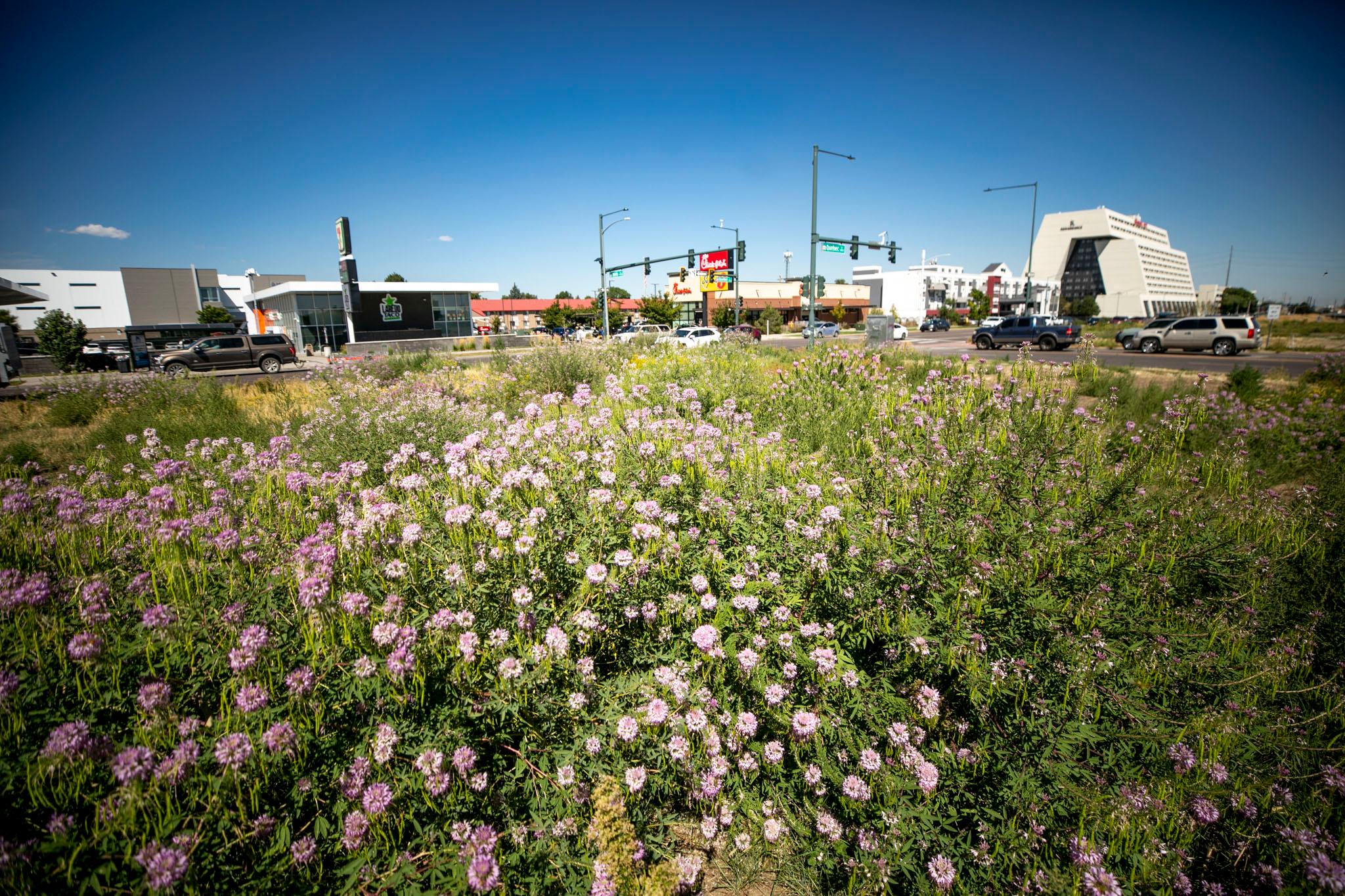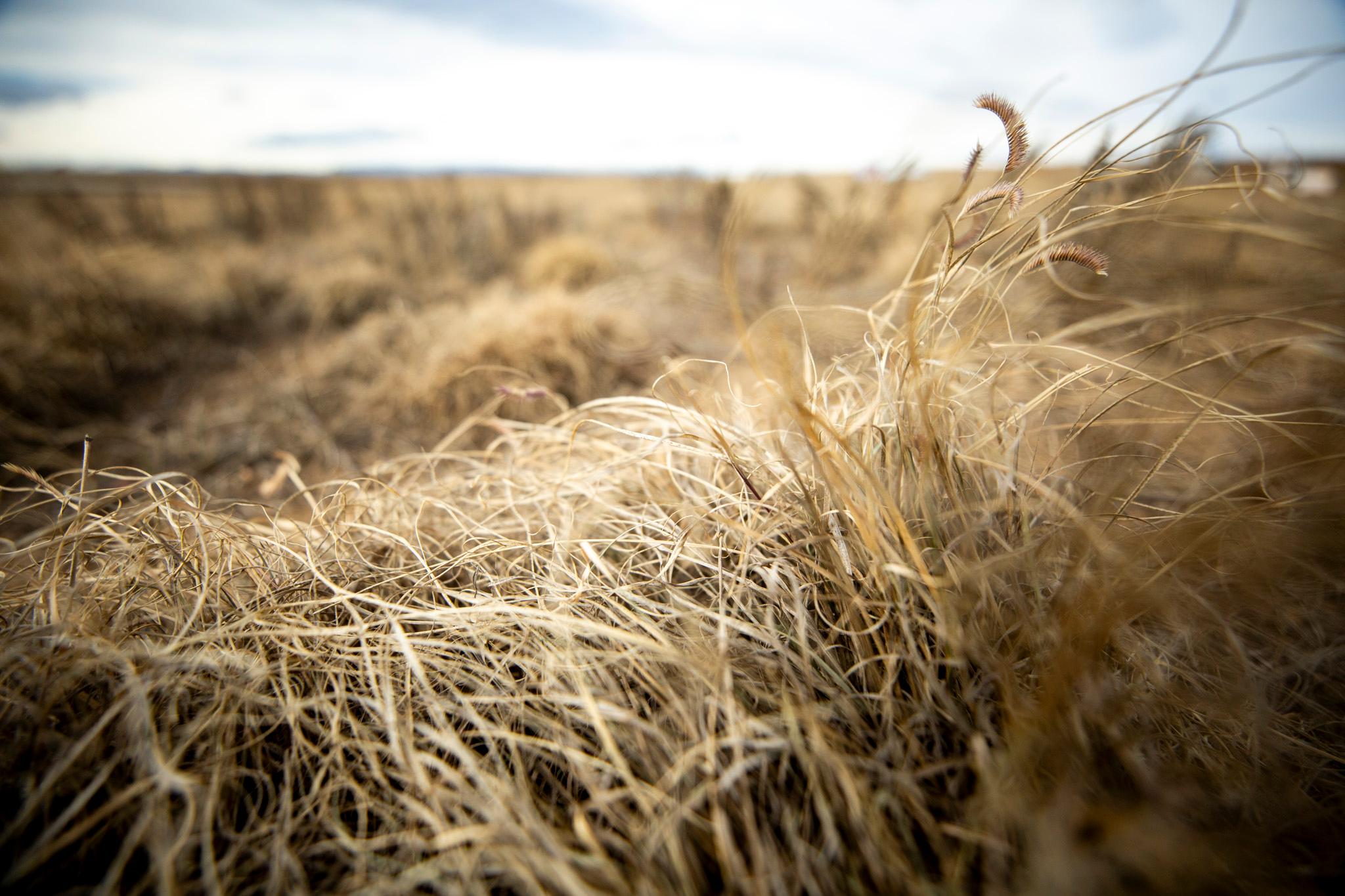The complaints from Central Park started flooding into Denver Parks and Recreation over the past year.
The subject of ire? The Quebec Street median between Northeast Park Hill and Central Park.
“Do you happen to know what is going on with the grassy median on Quebec between MLK and Smith Road?” one resident wrote. “It is all weeds, trash and dead grass.”
“The median between northbound and southbound Quebec needs to be mowed,” wrote another. “And maybe sprinklers need to be turned on.”
All that tall, dry-looking vegetation that has residents calling 311 is actually part of Denver Parks and Recreation’s eco-friendly plan.
The agency wants to get rid of non-functional turfgrass in places that are largely not used for picnicking, sports and other recreational uses.
The 10-acre Quebec Street median is a prime example of underused, rarely walked-on patches of land. The city doesn’t see much of a point in keeping turf grass there.
The Kentucky bluegrass that once grew on the median is not native to Denver, Andersen said. And it’s a water suck — a problem in a state that regularly faces drought.

The former landscaping required roughly 10 million gallons of water for irrigation. Keeping the Kentucky bluegrass trim also meant weekly mowing.
“It's not something we're going to remove from the park system entirely,” said Denver Parks and Recreation urban ecology supervisor Jessica Andersen. “We're just looking for those nonfunctional spaces.”
So instead of re-planting Kentucky bluegrass, the city made a change.
Nearly a year ago, Parks and Rec decided to save water, toss down native seeds and let local plants grow on the Quebec median.
They call this “Coloradoscaping.”
It’s the process of getting rid of bluegrass and creating meadows and other spaces that look like Colorado native landscapes. That includes planting western wheatgrass and wildflowers like blanket flowers, prairie cone flowers or Rocky Mountain bee plants.
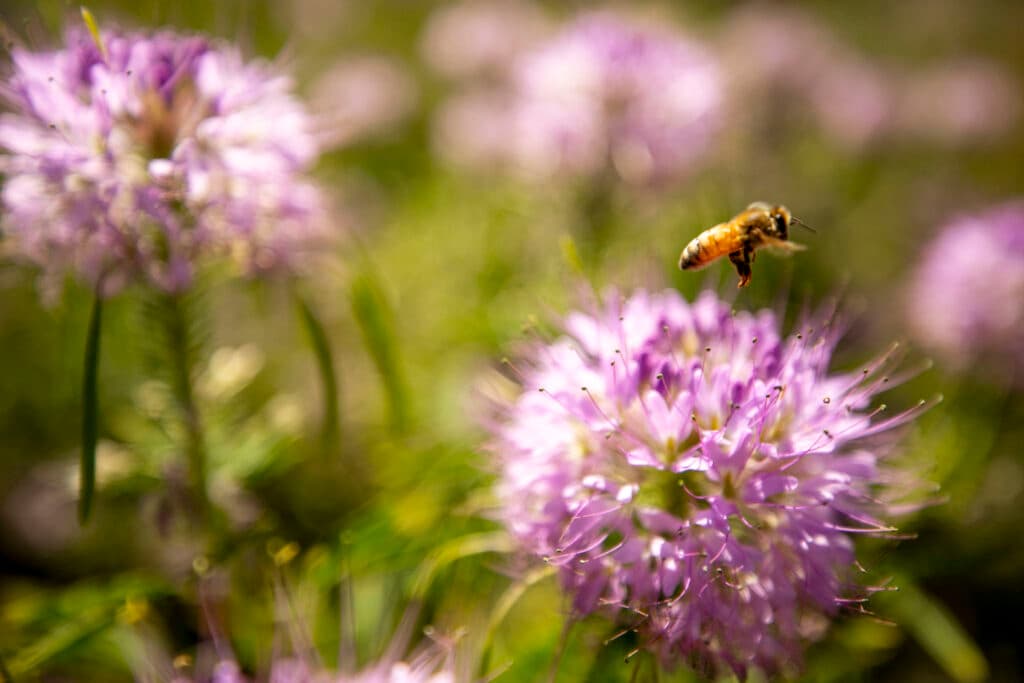
“It's really the spectrum of changing from that bluegrass to a mixture of wildflowers and grasses to support our urban wildlife and especially our pollinators,” Andersen said.
As climate change upends ecosystems, pollinators like bees and butterflies have been suffering. The city's using efforts like the one on Quebec Street to help out. And it’s clear when you walk into the median (something the city doesn’t want you to do) — bees are going wild for the flowers.
The Quebec Street median is the largest plot Parks and Rec has Coloradoscaped yet.
On that site alone, the city will be saving the equivalent of an Olympic-sized swimming pool full of water each year.
Transforming the landscaping will allow the city to cut back on mowing the median every week and will reduce the parks department’s energy use.
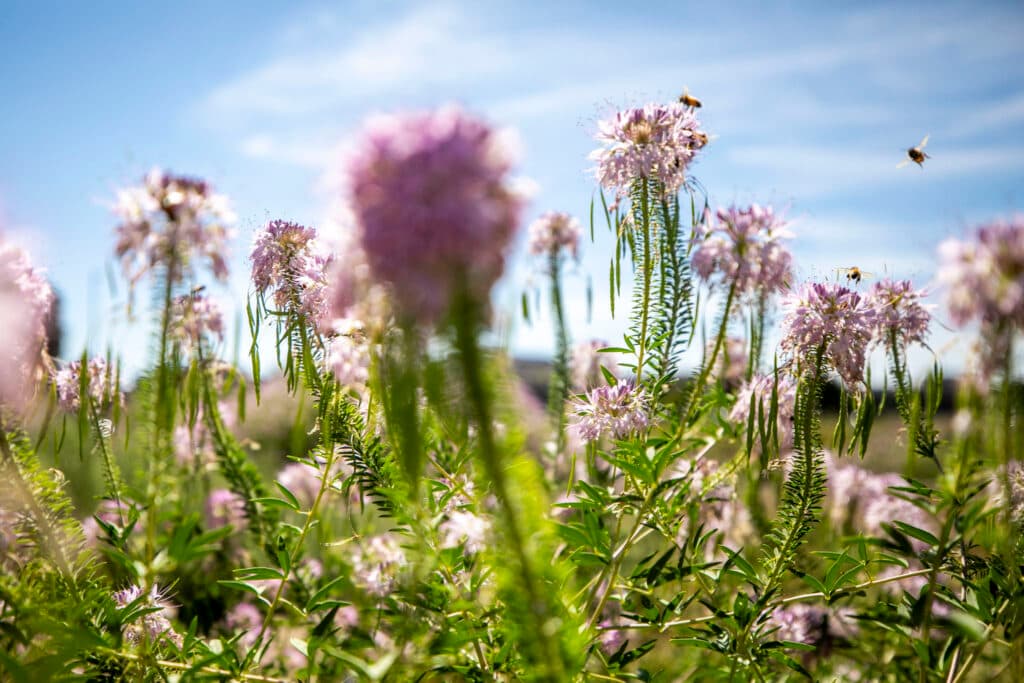
The wild landscaping has another function: public safety.
“Hopefully the native grass will encourage people to cross at the signals instead of trying to cut diagonally across in between traffic,” Andersen said. “That's very, very unsafe. Hopefully, with the landscaping in this condition, it will funnel them to those sidewalks.”
Denver Parks and Recreation secured a $50,000 grant to fund the project, and both the parks department and Denver Water each put roughly $125,000 into the new landscaping.
So how are Denverites taking to the new landscaping look?
From the feedback Parks and Recreation receives, half the public thinks the new plants look beautiful and the other half thinks it looks messy.
Andersen blames that on “an education gap.”
It’s hard for folks who haven’t heard about the city’s Coloradoscaping efforts to wrap their heads around why the vegetation has grown so tall. They wonder if the city abandoned the land and let weeds take over.
Though the plants bring pollinators to the median, some worry drivers will splatter bees on their windshields.
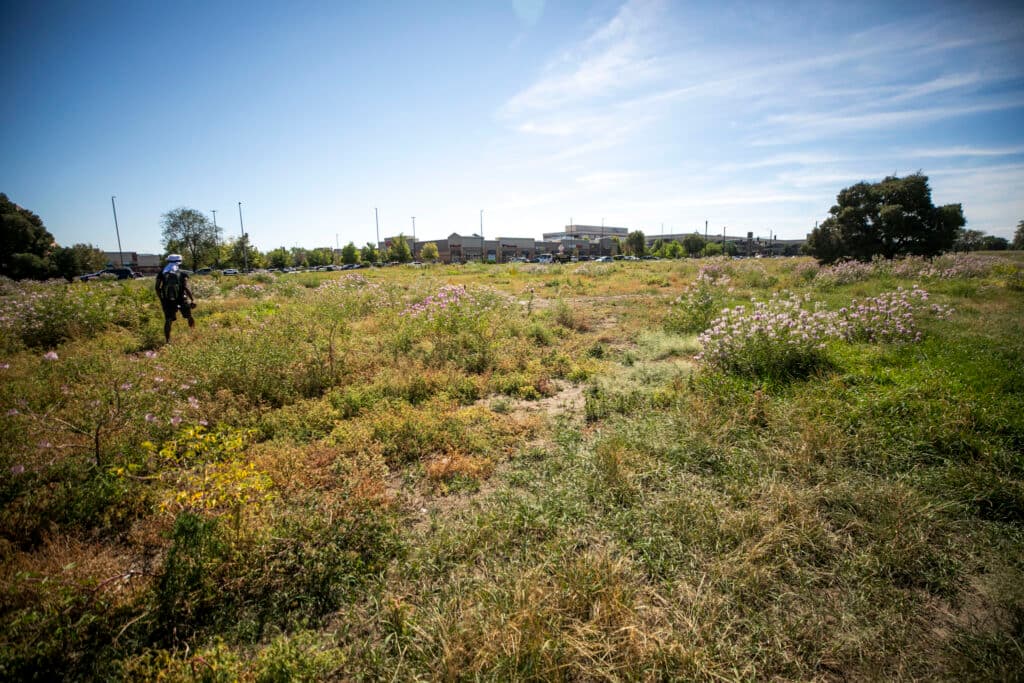
On narrower medians, this is a real risk, Andersen explained. But Quebec Street is wide.
“Those pollinators and some of those insects can live their entire life cycle in these landscapes,” she said. “So once they get there, they just move up and down the corridor.”
What about the trash in the Quebec Street median?
Trash lodges in the Coloradoscape more easily than they would in neatly cropped turf.
Beneath the buzzing bees above the Quebec median, there’s plenty of evidence of that: styrofoam cups, fast-food wrappers and cigarette butts.
And Anderson acknowledges that because the city doesn't mow these landscapes weekly, there is more short-term maintenance required.
The city has an ongoing contract with the company that installed the native seeding. For at least the first three years, it’s responsible for maintaining the rising seeds, making sure plants are established, and ensuring weeds and trash are under control. After that, the parks department will reassess.
When the project first began, many residents worried that the new vegetation would catch fire.
But that’s not likely.
“We know in Colorado, wildfires are a serious thing,” Andersen said. “And a lot of it is based on the health and condition of that landscaping. So a healthy stand of native grass is pretty resilient to wildfires.”
Those native plants’ roots are typically deep in the soil, and if the plants are healthy, they are resistant to wildfire.
“If there’s more weedy species, and they’re more dried out, that’s when wildfire becomes a risk,” she said. “So in some cases where we have a healthy stand, that wildfire risk is going to be lower versus in a weedy landscape that dries out. “
“So on Quebec Street, because it used to be Kentucky bluegrass, the entire area is still irrigated,” Andersen added. “So we are making sure that stand of grass will be healthy and well.”

Correction: An earlier version of this story misidentified a plant as Rocky Mountain pea plant. It's actually Rocky Mountain bee plant. We regret the error.

